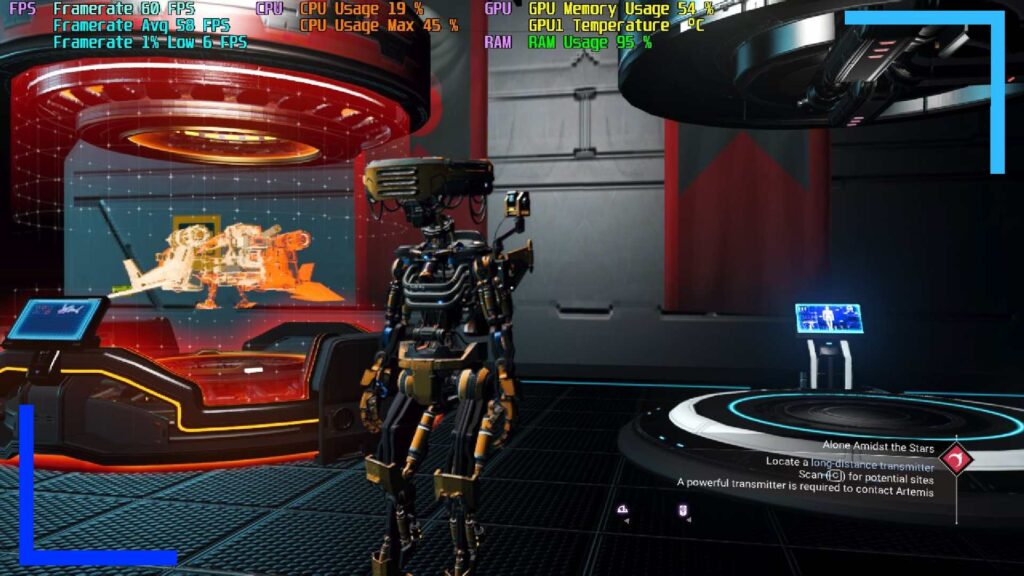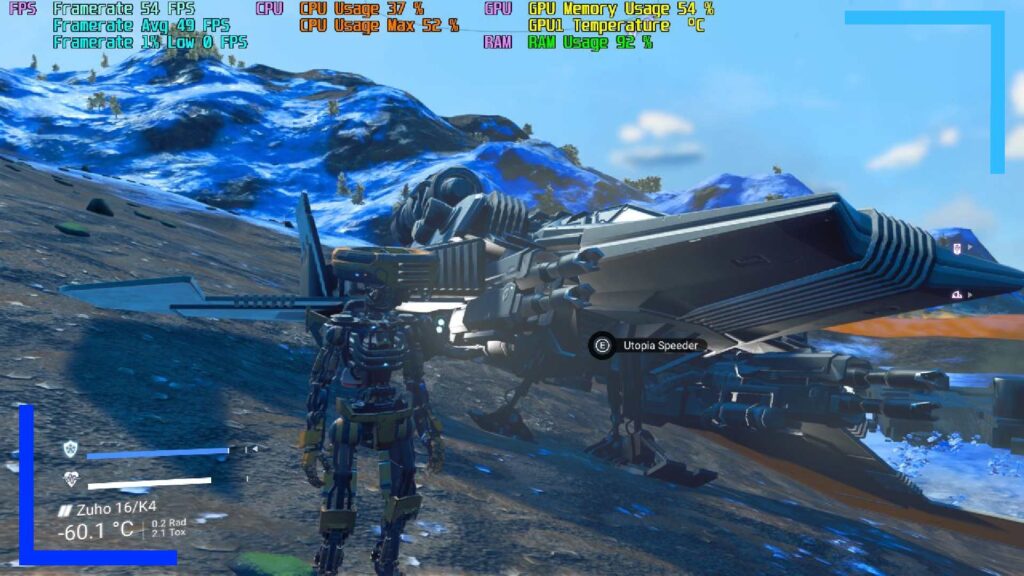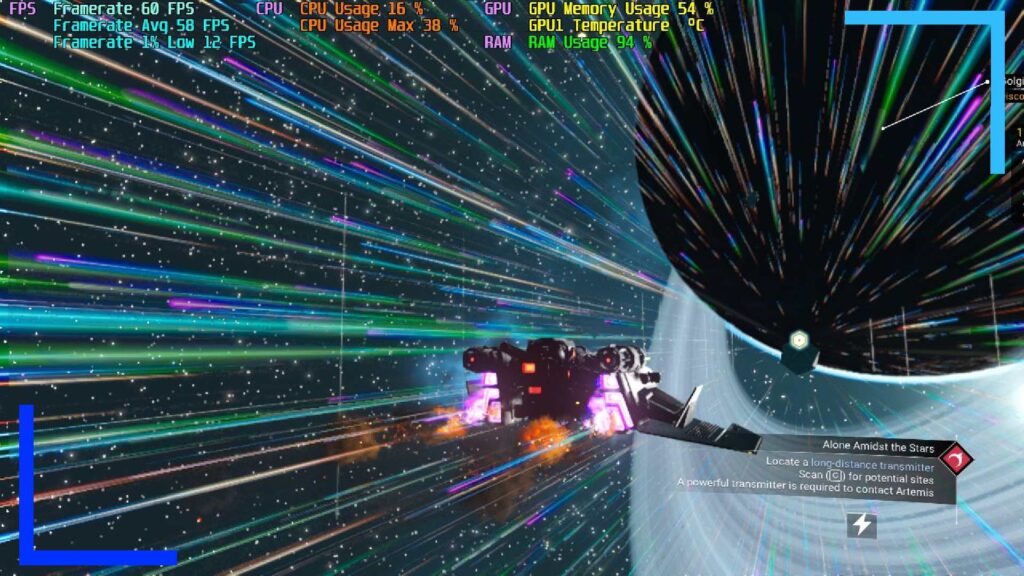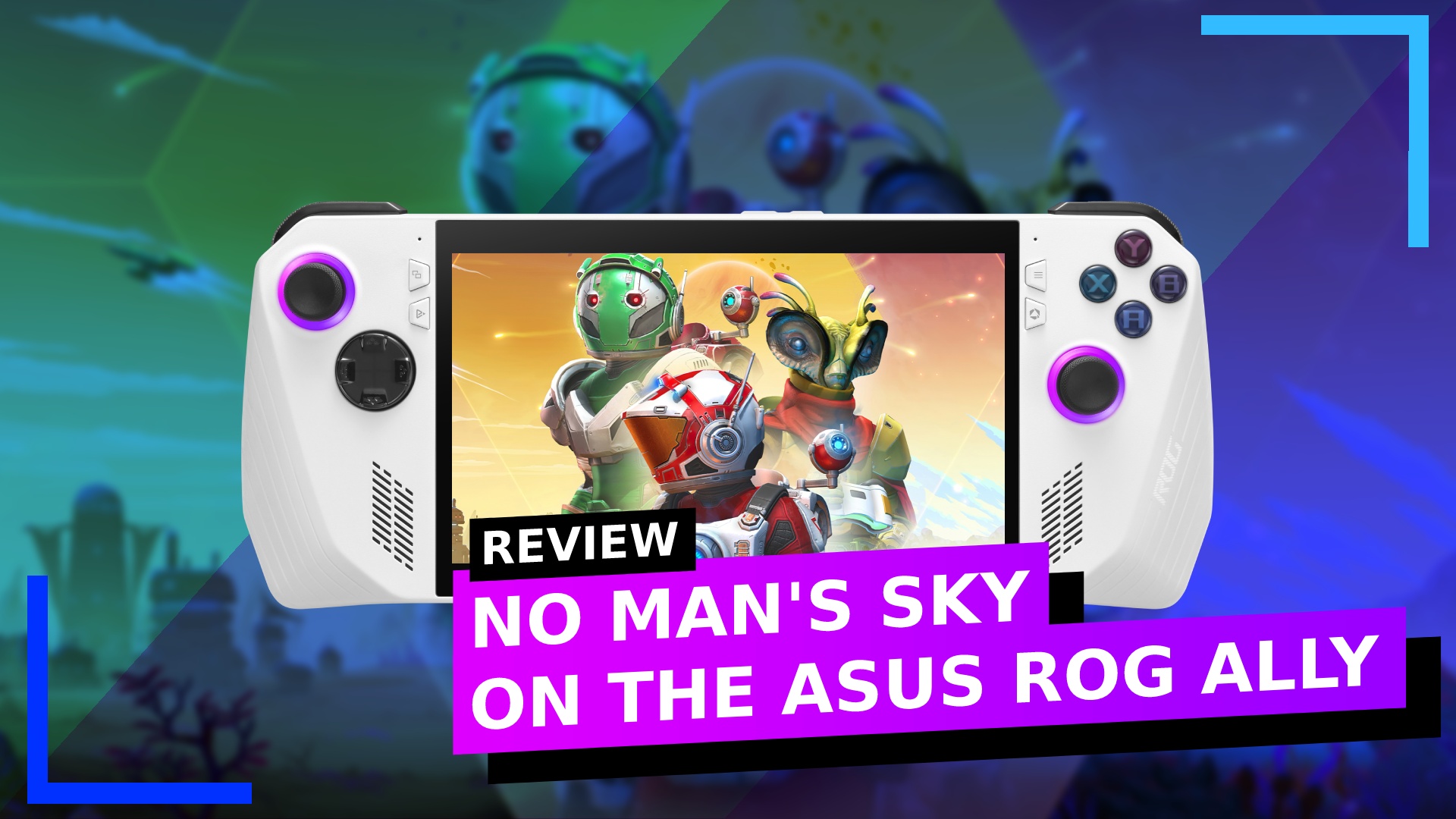
Performance
Performance across the board is solid. Stuttering is an issue that plagues the loading of new areas, but it’s generally manageable.
For the most part, No Man’s Sky will stick to 60 frames per second when running the game on low settings. FSR 2.0 can – and should – be used to bring extra clarity to the image quality. The difference, especially when using the Ally in docked mode, is night and day. Most muddy outlines get cleared up.
What I will say is No Man’s Sky looks much nicer on the ASUS ROG Ally’s screen than it does when hooked up to a TV. FSR does help, but there’s no getting around how 720p looks on a full-HD TV screen. It’s not anywhere near as clean as it is on the smaller screen, so I’d recommend sticking to handheld mode for this one.
That is, unless you hook up an XG Mobile. With the RTX 4090 eGPU attached, No Man’s Sky runs at 60 frames per second with all the settings maxed out. It’s a similar experience to that of the PS5 version, albeit with the XG Mobile’s fans blearing in the background.
Recommended Settings

The settings below are what I used to get mostly 60 frames per second while still retaining quality visuals. If you find the game is struggling at any point, feel free to change from performance mode to turbo in the ROG Ally quick access menu. I found performance mode was more than enough but the option’s there should you need it.
You can also lower the anisotropic filtering as well if you need a little bit of extra processing power.
What’s impressed me most is despite how complex No Man’s Sky is, somehow the temperature of the ROG Ally sits within acceptable means. At around the 60-degree mark, No Man’s Sky isn’t running hot, which is wild given how much can be going on at any time.
| No Man’s Sky (In-game Settings) | |
| V-Sync | Triple Buffered |
| Resolution | 1280×720 |
| Texture Quality | Standard |
| Animation Quality | Standard |
| Post Processing | Standard |
| Volumetric Effects | Standard |
| Terrain Tessellation | Standard |
| Planet Quality | Standard |
| Base Complexity | Enhanced |
| Anisotropic Filtering | 16x |
| GTAO | Standard |
| Anti-Aliasing | FidelityFX Super Resolution 2.0 |
| FSR 2.0 | Quality |
| ASUS ROG Ally Settings | |
| Profile: Performance 15w | Estimated Battery Life: 2 Hours |
| Docked Mode Resolution: 1280×720 | RSR: Off |
| Temperature: 80 degrees | Refresh Rate: 60 Hz |
| RAM Usage: 80 to 95% | Temperature: 59 degrees |
| Performance Rating: 3/5 | |
Bugs and Issues

The biggest issue with No Man’s Sky is stuttering and there doesn’t seem to be a quick fix for this one. Flying from the planet’s surface to outer space often results in hitching, as does crossing invisible boundaries.
It’s also worth keeping in mind whenever a new update drops, expect crashes aplenty. That’s down to the complexity of No Man’s Sky, though. Like a lot of games, it’s held together by metaphorical duct tape, so any changes can have a knock-on effect. These issues are normally always fixed within a few weeks, though, so it’s not a major issue. Hello Games is good like that.
Steam Deck Comparison
Over on the Steam Deck, performance is about the same. Although the ROG Ally is the more powerful of the two consoles, No Man’s Sky runs best on the lowest settings when it comes to handheld, so visually, there isn’t much difference between the two consoles.
Load times are slightly faster on the ROG Ally and the Ally often sticks closer to the 60 frames per second target. That’s about it, though.
Verdict

I’ll take any excuse to go back to No Man’s Sky, and the latest expedition felt like the perfect time to see how the game handles on the ASUS ROG Ally.
If you’re after a space sim where you achieve nothing and everything, that’s No Man’s Sky. The game continues to stun with its incomprehensible size and scope, and the exploration – be it for loot, gear, or vistas – remains as compelling today as it did when it released.
No Man’s Sky remains the best space sim out there, and with solid performance on the ASUS ROG Ally, it comes easy to recommend.

Disclosure: All screenshots captured on my ASUS ROG Ally. | Review code provided by Hello Games.| To learn more about our review policy click here. | Alternatively, click here to find out why you can trust me.

